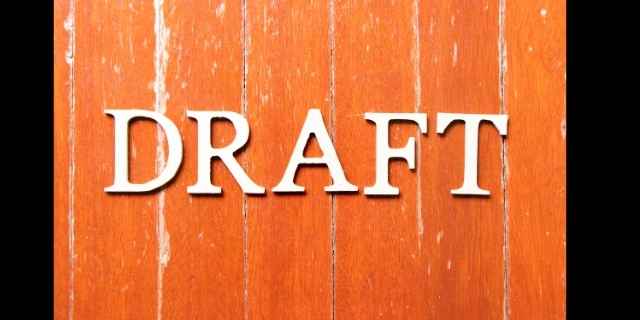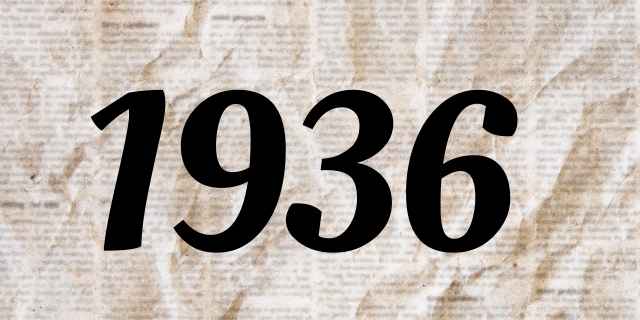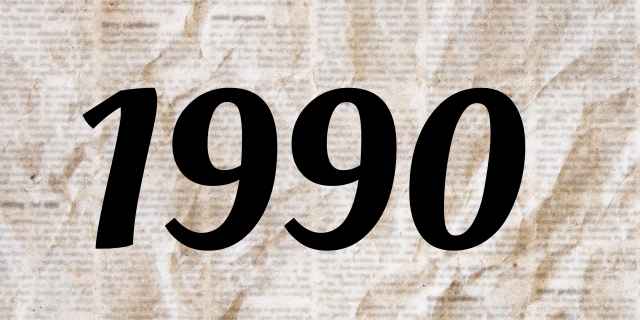Today, the NFL draft is a major television spectacle with non-stop reporting of every single pick and trade. Camera crews travel to the player’s homes and there is endless discussion of the choices.
It wasn’t always this way. For years, drafts happened in back rooms with no coverage.
Before that, there was no draft. How and why did the draft come about? It’s all Stan Koska’s fault! Who? Read on…
Why Was The Draft Created?

Until the mid-1930s, there was no draft in the NFL. There were three main factors that drove its creation:
- wealthier teams getting into ever-increasing price wars
- college stars playing one team off another
- growing perception that only a handful of teams could win the league
Let’s look at these factors in turn.
Price wars between teams
Teams would make offers to players and the player would choose which team to sign with.
This resulted in a serious imbalance in the league, as wealthier and more prestigious teams would sign more of the best prospects.
At the other end of the scale, the poorer teams weren’t only competing against other NFL teams. Many jobs available to a young man coming out of college paid more than a lot of NFL contracts.
Also, the NFL was far less prestigious than big-time college football. Many college stars looked at an NFL career as a step-down and demeaning. This led in turn with poorer teams struggling to sign players and competing with the big guns.
Stars playing the system

Top college stars also played this for all it was worth, starting bidding wars between teams.
University of Alabama superstar Don Hutson signed with two NFL teams at the same time, the Green Bay Packers and the Brooklyn Dodgers.
He was awarded to the Packers after the NFL president decided they had mailed their contract a few minutes earlier!
Most top players would either sign with the team that offered them the most money, or the team that gave them the best shot at winning a championship.
NFL becoming less competitive
In the nine years before the draft, the Packers, Giants, and Bears won seven of the NFL championships.
Poorer teams, who had trouble putting together winning seasons, also had trouble selling tickets. This in turn left them with even less money to spend on players.
1935: Stan Koska Is The Last Straw
In 1935, both the Brooklyn Dodgers and the Philadelphia Eagles wanted University of Minnesota All-Star Stan Koska.
Koska very skillfully created a bidding war and ended up signing a contract with the Dodgers for $5,000.00.
Koska had maneuvered the Dodgers into paying him a salary equal to that of the biggest superstar in the league, the Chicago Bear’s Bronko Nagurski.
This was the last straw for Philadelphia Eagles owner Bert Bell. The Eagles were a perpetual doormat who struggled to get players to come there instead of the more dominant Giants, Packers, Bears, and Boston Redskins.
Famous meeting
At an NFL meeting in the spring of 1935, Bell argued for the enactment of a draft so that all teams would have an equal chance to sign new players out of college.
Bell felt this was the only way the league could get some semblance of parity, and the only way the smaller teams could survive.
The representatives of the other teams agreed, and the proposal was adopted unanimously.
1936: The First Draft

The first draft was held in the Philadelphia Ritz Carlton Hotel in February of 1936.
A list of 90 college players was compiled from newspaper reports, word of mouth, and reputation. The ninety names were written on a blackboard placed at the front of the room.
There were no scouts, no agents, and no reporters present.
How did the draft work?
The draft was 9 rounds spread out over two days, with teams picking in reverse order based on record.
Once a team picked a player, no other team could negotiate with that player unless the drafting team traded them or released them.
Hit and miss in the early days
With only two wins the previous season, the Philadelphia Eagles selected University of Michigan star Jay Berwanger as the first pick in the first-ever NFL Draft.
Berwanger never signed with the Eagles, who traded him to the Bears. He ultimately never signed with the Bears either, taking a more lucrative job as a foam rubber salesman.
Of the 90 players considered in the first draft, only 24 ever signed with an NFL team.
Slow changes
The draft didn’t change much for about a decade. The teams gathered in the rooms and picked players that most of them had never seen.
Briefly, the NFL had a bonus pick where a randomly selected team would get the first pick. This was quickly phased out.
However, the draft started to involve in the late 1940s.
Evolution Of Scouting

In 1946 the Los Angeles Rams hired the first NFL scout. Other teams followed, and soon the draft picks were being made with first-hand information gathered by team employees.
With thousands of players to evaluate, teams in the 1960s began to combine their scouting departments to save money.
BLESTO is the name of the Bears, Lions, Eagles, Steelers Talent Organization. Similar Groups are NFL Scouting and Quadra Scouting.
With professional scouting, and computers to crunch the numbers, the teams had much more information, but the basic format didn’t change much.
What About The Rival AFL?
During this era, the NFL draft came into competition with the new American Football League. Of course, the AFL had its own draft of the same college players!
There are great stories from this era of NFL teams hiding prospects in hotels under police guard while AFL agents slipped through to steal them away and sign them!
Often, competing owners from NFL and AFL teams would sprint onto the field at some player’s last college game in an attempt to sign him before the other side did!
It was largely the chaos in the draft that caused the two leagues to merge in 1966.
1985: Creation Of The NFL Combine
In 1976, the New York Jets started inviting college players to their facility for physicals and interviews.
Other teams followed suit. Soon, top college prospects were having to travel from city to city, repeating tests over and over, and missing classes. The college faculties started to complain.
In the early 1980s, the top scouting groups started holding camps where all the testing and interviews could be done for the teams represented by the groups at once.
To save money, the major scouting groups combined their camps in 1985. The NFL combine was born.
The combine allows all the teams to have access to and test the players before evaluating them for the draft. The upside for players is that they may only have to go through the ordeal once.
1980s: The Draft Becomes A Major Spectacle
Before ESPN got involved, the draft was very low-key.
Selections weren’t covered. At most, a team’s picks might appear in that team’s local paper after the fact.
Before 1970, players weren’t called by the teams and generally found out their draft status by mail or reading a newspaper.
Future all-pro quarterback Bob Griese, who was drafted 4th overall in the 1967 draft, didn’t even know that a draft was going on at the time or that he had been selected!
In 1980, ESPN started to televise the draft. Despite skepticism, it has grown in popularity every year until it has become a massive television event.
1990 – Changing The Eligibility Rules

Back in 1925, three-time All American Red Grange signed with the Chicago Bears after only three college seasons. At the time, college football had far more prestige than the NFL, and there was uproar.
The NFL brought in rule whereby college players had to complete four seasons.
In 1990, they reduced this rule by one year. But why have these kinds of restrictions? We cover the pros and cons in our in-depth article on the NFL three year rule.
How Does The Draft Work Today?
Even though it’s now a spectacle, the mechanics of the draft haven’t changed much.
A list of players is still compiled mostly from colleges. But prospects have also been known to come from the Arena Football League, the Canadian Football League, or the German Football League.
Picks are still assigned in inverse order to the team’s record.
Each team is assigned a certain number of picks for the draft. However, teams can trade their draft picks for players or lose them because of a whole list of infractions, both off the field and on.
The countdown for picks
In the NFL today, there is a reducing countdown for making picks. Each team has:
- ten minutes to make a first-round pick
- seven minutes in the second round
- five minutes in rounds three through six
- four minutes in round seven
These time pressures can trip up teams. Well, maybe one team in particular… We’ll cover a famous screw-up in the next section.
You may be wondering if the draft is the only way into the NFL. No, there are other routes but they have their own big hurdles. Check out our article that explains how players can get into the NFL without being drafted.
How Teams Can Mess Up In The Draft

As the Minnesota Vikings famously demonstrated in 2003, you can lose your spot in the draft by being slow.
Back in 2003, fifteen minutes were allowed for a first-round pick (it’s ten minutes now).
The Vikings were picking seventh in the first round and were fielding offers for trades from several other teams.
The franchise apparently thought they had a trade deal with the Ravens. But the Ravens never notified the league of this. This meant that Vikings hadn’t registered a pick in the seventh.
As the Vikings’ time ran out, the next two teams jumped in and made their picks. Realizing their error, the Vikings put a pick in but were now picking ninth instead of seventh!
More About NFL History
Check out these articles on aspects of football history.
- How the flying wedge began in football and was outlawed
- History of the blitz in football
- History of special teams (scroll to the second half of the article)
- Did American football come from rugby?
And what about the gear? How did equipment develop?